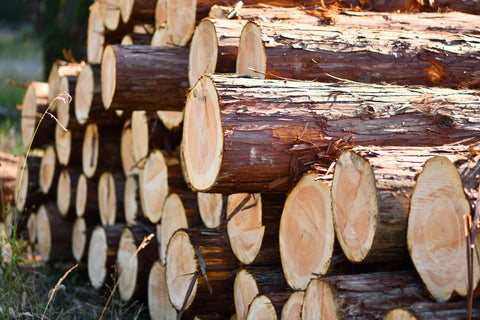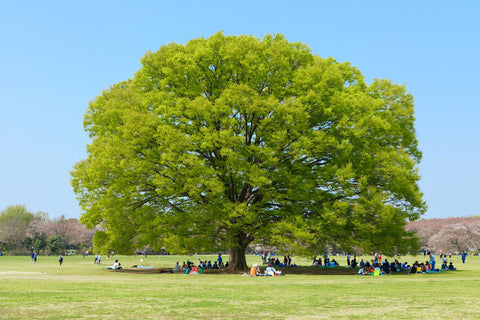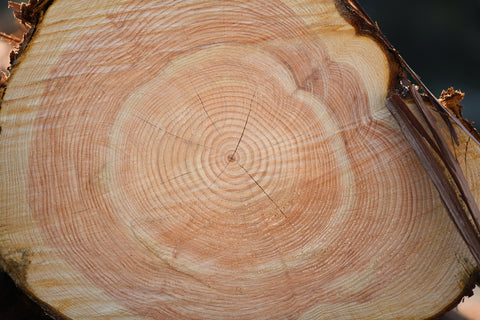All You Need To Know About Japanese Wood

Jump to:
Third in the world, only behind Finland and Sweden, in terms of the forest coverage ratio of its total land area, about two-thirds of Japan’s land area is made up of forests. The result of this ready access to wood has meant that Japanese people have long made copious use of it for building houses (approximately 60% of houses of three stories or below are made of wood) and for their religious buildings (temples and shrines), as well as for various crafts and ornaments.
In this article, we shall take a look at the common types of Japanese wood, the major areas of production for each, and look at their uses and particular qualities, as well as consider some rarer varieties. We shall then round off by looking at the advantages of using Japanese wood when constructing buildings, which include adaptability to Japan’s climate and safe housing in a country prone to earthquakes.
Wood Used To Build Japanese Houses
There are four main types of wood used to build houses in Japan. These are the Hinoki, Sugi, Karamatsu, and Akamatsu.
Hinoki (Japanese Cypress)

Hinoki wood is perhaps the most famous type of wood in Japan. It has a beautiful gloss and an aroma that is said to be reminiscent of lemon. It has a yellowish-white color with a light-yellow or light-brown core. Although it is produced on all of the main islands except Hokkaido, it is most commonly found in the central areas of Japan. In addition to its use in the construction of residential homes, it has been used for many religious buildings, notably Horyuji Temple, one of the powerful Seven Great Temples, in Ikaruga, Nara Prefecture, and said to be the world’s largest five-story temple, which was built in 604 BC. Its resilience over the centuries can be said to be a result of the hardness of Hinoki wood, which grows harder after harvesting, and its high resistance to insects and termites.
Its uses don’t stop with constructing buildings, however, and it is also used as the material for bathtubs and kitchen furniture.
Sugi (Japanese Cedar)

Wood from Sugi, which is actually the national tree of Japan, has a lower density than Hinoki and is often found planted around temples and shrines. Famous Sugi comes from Akita and the southern island of Yakushima, off Kyushu island. It is a sturdy lightish-red or reddish-brown wood, that is often used for load-bearing structures. It is also commonly used for outdoor projects due to its high decay resistance. Its anti-mold qualities also make it a popular choice for toilets, bathtubs, and kitchen cabinets.
Karamatsu (Japanese Larch)

Karamatsu has a brownish-white color with a reddish-brown core. It is found mainly in the mountains of the Kanto and Chubu areas of Japan. The wood is hard and strongly water resistant and is commonly used for general construction, including wooden columns, floorboards, and wall panels. Poles made from the larch wood are also used for fencing.
Akamatsu (Japanese Red Pine)

Named after its red bark, Akamatsu also has a good level of hardness and elasticity and is highly resistant to water. Akamatsu is cultivated both for its timber and ornamental uses and is commonly found in traditional Japanese gardens. The tree is found in many areas of Japan, from Northern Honshu, down to Shikoku and Kyushu. It is highly rot-resistant and this combined with its water resistance makes it a suitable material for bathrooms and outdoor projects. Akamatsu is found in many religious buildings, such as temples and shrines, where it is often used in beams.
Some Rarer Types of Japanese Wood
The four types of wood described above are the standard ones used for creating buildings, but there are some other slightly less common types that also serve useful functions.
Koyamaki (Japanese Umbrella Pine)

Koyamaki is an evergreen coniferous tree that grows naturally in the mountains west of central Honshu. Although Koyamaki is characterized by its dense texture, softness, and lack of luster, it has the advantage of being resistant to wetness. For this reason, it is mainly used for bathtubs, pails, sinks, pickle containers, miso containers, and rice containers, as well as rice tables. It has also been widely used as lumber for Japanese-style ships. The fragrance of Koyamaki is said to have a fresh and clean feel, with a woody tone that makes you feel like you are in a forest!
Kiri (Paulownia)

Paulownia wood is the lightest wood in Japan with a density (specific gravity) of about 0.2-0.35 g/cm3, but, even so, it is highly warp-resistant. In addition to its elegance, paulownia wood has long been valued as a material for the koto (Japanese harp) and biwa (Japanese lute) because it is moisture-proof, resistant to decay, and improves acoustics. The highest quality instruments are paulownia wood with beautiful grain that has reached 200 years old. Paulownia wood grown in the cold regions of Hokkaido and Tohoku in particular is said to be a good material because of its dense grain, large ducts, and low density.
The wood also has a low silica content and so is often the wood of choice for wooden boxes carrying tools, as this low silica content reduces dulling of the blades of the tools contained therein.
Keyaki (Japanese Elm)

Keyaki is a deciduous tree of the elm family that grows naturally in the mountains and hills of southwestern Hokkaido, Honshu, Shikoku, and Kyushu. It is used as a tree for lining the streets and a windbreak for houses. It is one of the representative giant trees of Japan.
Its wood tends to be used for fine ornamental furniture, such as chests of drawers, as well as household kitchen utensils such as bowls. It is also considered to be an ideal wood for making Taiko drums.
Jindai Sugi (Old Japanese Cedar)
Jindai Sugi can exist for thousands of years and are often found hidden away at the bottom of lakes and marshes. The wood has a high iron content, which gives it its dark colors. Being an extremely scarce item, it is only used for precious items such as elaborate flower vases or utensils used in the tea ceremony,
Advantages of Using Wood For Buildings

As mentioned earlier, one of the main reasons that Japan uses so much wood for making buildings is because of the abundance of it as a resource. This is not the only reason, however. Over the centuries Japanese people have found wood to be the perfect material for dealing with the climate and other environmental factors in Japan.
Japan’s Summer
The rainy season (called “Tsuyu” in Japanese) is the month or so of consistent rainy days and high humidity that hits the Japanese archipelago around June every year. As summer progresses, things heat up even further. A long-term goal of Japanese housebuilding has been the reduction of heat and humidity in the home. Wood has the quality of being able to absorb humidity in humid environments, adjusting it to a level of about 60%, which people find comfortable. Stone, brick, and iron cannot reduce humidity in this way.
Japan’s Winter
Japan’s winters are cold and dry, the opposite of Japanese summers, and the dry air not only causes skin irritation but also fosters an environment in which viruses can flourish. Wood works beneficially in the opposite way as it does in the summer, and actually discharges moisture to adjust the humidity level up to that magic figure of 60% again.
Earthquake Resistance
Many visitors to Japan are amazed to learn that old wooden houses are resistant even to large earthquakes. When an earthquake hits, the shaking of the earth caused by an earthquake is transmitted to the buildings that sit on that earth, and the heavier the building, the more seismic energy is generated. Wood is lighter than other construction materials, which translates to less shaking by a wooden building than one made of other materials when an earthquake strikes. Amazingly, wood has a greater compressive strength and tensile strength for the same weight than stone, brick, or steel, making it more resilient.
If a sudden excessive bending force is applied, steel and concrete may break or collapse, while wood has a certain amount of give in it, and is, thus, less likely to capitulate when excessive bending force is applied.
As a final benefit, similarly to trees, wood is able to absorb CO2, which makes wooden houses a very environmentally friendly option.
Wood – The Perfect Material For Construction In Japan

Approximately two-thirds of Japan is forested and it contains a plethora of beautiful and functionally useful trees (see this article for more information on Japanese trees). In this article, we have introduced the way the wood of some of these trees is used for constructing buildings and for other uses.
Japanese people have a centuries-old relationship with wood and given the accessibility of the material, have developed ways of using it that complement their lifestyles as they adapt to an environment that ranges from hot and humid to cold and dry depending on the season, and is prone to natural disasters such as earthquakes.
Do you have a favorite type of Japanese wood? Let us know in the comments.

2 comments
Hi Eric, thanks for the comment. Japanese Zelkova is a great hardwood which can look really nice when varnished, particularly when you pick out a piece with good grain.
Regards,
Daitool.
Daitool,
Question: I’m looking for an attractive (when varnished/polished) hardwood native to Japan which I can use as part of a memorial flag case for a veteran who served there during the Korean War. Any suggestions?
Eric Bowen,